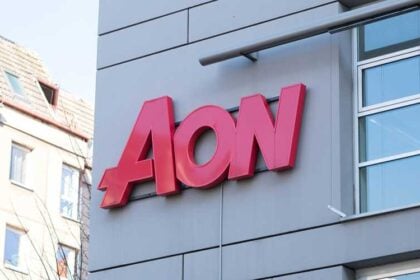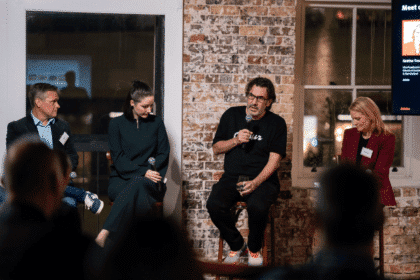The first-ever tranche of data from the Workplace Gender Equality Agency (WGEA) has been released to distinctly different amounts of fanfare, with some agencies performing admirably. Others less so.
Updated 4/3/24: Added comment from Publicis CEO Michael Rebelo.
Ostensibly, IPG Mediabrands performed the best of any holding group agency, achieving a 0 per cent gender pay gap across median base salary and median total remuneration. On the other hand, its subsidiary media agency Initiative recorded a 5.6 gender pay gap across both total and base salary metrics.
The WGEA mandated that all employers with more than 100 staff report their gender pay gap numbers. However, some agencies are noticeably absent — especially independent agencies. The holding companies do not consistently split up the numbers between each of their subsidiaries. All told, it’s a real hodgepodge mix of data. Regardless, we’ll dive into all the reporting from the holding companies here.
Lisa Annese, CEO of Diversity Council Australia, told B&T that the gender pay gap reporting was a “very effective” measure of women’s position within the economy and that “the onus on fixing and closing the gender pay gap” sits with the companies themselves. Staff who feel negatively affected by the gender pay gap, she said, “might want to search for employment in an organisation with a smaller pay gap” rather than trying to fix the issue themselves and, in turn, making themselves seem problematic.
Reactions to the numbers were swift with Lydia Feely, general manager at TrinityP3 Global Marketing Management, saying that the gap was not surprising.
“The dominance of men in [senior] roles remains startling. The reality is there is still a significant disparity. It has improved in recent decades but without a strong focus from the senior ranks the gap won’t close any further,” she added.
“This is about having tangible policies to support both men and women when it comes to things like parental leave, flexible working but also workplaces looking at their pay policies, value contribution and ensuring they aren’t systematically paying men more than women for the same level of work.”
Should you want to see if the big TV networks and other media players fared, read our analysis here.
The Agency calculated the median gender pay gap using the difference in the median remuneration of men and women, divided by men’s median remuneration. This difference is reflected as a percentage or a dollar figure. It also standardised every employee’s role to be a full-time equivalent to give a representative picture among casual and part-time workers.
Employers had to complete an online questionnaire related to policies, strategies, and actions on gender equality and two Excel worksheets designed to collect information about workforce composition; salaries and remuneration; and employee appointments, promotions, resignations, and parental leave.
Dentsu
Dentsu’s numbers make for fairly poor reading at first glance. Its 18.1 per cent and 18.2 per cent median base salary and median total remuneration gender pay gaps, respectively, are far from good.
Its gender composition by pay quartile also doesn’t reflect particularly well. While the Group as a whole has a 52/48 per cent female-male split, men make up more than three-fifths of the upper pay quartiles while women make up nearly two-thirds of the lowest quartile.
B&T contacted Dentsu for comment.
M&C Saatchi
M&C Saatchi recorded a 9.3 per cent and 9.2 per cent median base and media total remuneration pay gap, respectively. It’s better but still not great considering that the WGEA believes companies should be aiming for a five per cent swing on either side of a zero pay gap. However, it has a 55/45 female-male split.
B&T contacted M&C Saatchi for comment.
Enero
Enero, the parent company of the likes of BMF, has recorded 9.6 per cent and 9.8 per cent median base salary and median total remuneration pay gaps. However, its workforce has a 63/37 per cent female-male split with women making up more than 70 per cent of the second-lowest pay quartile.
Nikki Harrison, Enero’s chief people and culture officer, told B&T: “We’re really proud to report our workforce is made up of 63 per cent females and our average total remuneration pay gap in Australia is -1.4 per cent in favour of women, versus the industry standard of 16.1 per cent in favour of men. In acknowledging our progress reflected in the WGEA gender pay gap regarding our median total remuneration, we recognise that while it’s not perfect, it signifies a meaningful step in the right direction in ensuring there is no gap.
“As we continuously emphasise the importance of equality, and are continuously working to create a progressive, inclusive, and fair workplace for all, our commitment to closing the gap remains resolute.”
Clemenger
Clemenger, ostensibly, fared much better than most other agency groups. It recorded one per cent and 0.7 per cent median base salary and median total remuneration pay gaps and its overall workforce was nearly two-thirds women. However, men hugely over-index at the top orders of its business with 63 per cent of executives and general managers and 73 per cent of its heads of business being men.
Omnicom
Omnicom performs admirably in the WGEA’s assessment recording 0.3 per cent and 0 per cent median base salary and median total remuneration pay gaps. As a whole, 62 per cent of its staff are women. However, most of these are located at the lower levels of the business.
“As an equal opportunity employer, OMG upholds a commitment to equality, diversity and transparency, including our objective to achieve parity in salaries for our people regardless of gender. We are proud to have achieved our current position and are committed to continuing to do the work to maintain and improve upon this,” said Omnicom Media Group CEO Peter Horgan.

WPP & GroupM
WPP and GroupM reported their numbers separately, with the latter performing a fair bit better.
WPP recorded 19.2 per cent and 16.4 per cent median base salary and median total remuneration pay gaps. GroupM, on the other hand, recorded 14.7 per cent gaps for both measures.
WPP did not reply to B&T‘s request for comment in time for publication. B&T contacted GroupM for comment.
Havas
Havas, meanwhile, recorded 18.9 per cent gender pay gaps across both measures. That isn’t the best performance and is slightly confounding given that women make up more than three-fifths of its executive and general managers.
B&T contacted Havas for comment.

IPG Mediabrands & Initiative
Though it is slightly confusing that the results are split out, Initiative and parent company IPG Mediabrands are perhaps the star performers from among the big agency groups. IPG reported 0 per cent gender pay gaps across both measures and Initiative recorded 5.6 per cent gaps across both measures.
“This is a very positive result for Mediabrands and acknowledges the tremendous amount of work we’ve done in this space in the past few years. While we certainly acknowledge there is still more work to be done to continue to advance equality, our action plan and gender equality focus areas are focussed on continuing to move the dial in the right direction when it comes to the Gender Pay Gap,” said IPG Mediabrands CEO Mark Coad.
Publicis
Publicis split its reports out across two separate companies with Publicis Communications and Publicis Media grouped together, with Publicis Sapient listed separately.
The Communications and Media arms reported 13 per cent and 12.2 per cent median base salary and median total remuneration pay gaps. Sapient, meanwhile, reported 7.2 per cent and 11.3 per cent median base salary and median total remuneration pay gaps — slightly odd considering its techy focus.
Michael Rebelo, Publicis Groupe ANZ CEO said: “While we’ve made some progress in closing the gender pay gap over the past three years, it’s clear that we still have more work to do, to accelerate our ambition to reach a zero pay gap.
“What we’re encouraged by is how we are faring in terms of pay equity. This is achieved when employees receive equal pay for work of equal or comparable value, regardless of their gender, race and other factors.
“We use a world-leading workplace equity analytics platform called Syndio to measure pay equity. It enables us to identify inequities in compensation, representation and promotions. Syndio takes into account an employee’s city of work, department and levels of responsibility. Using this detailed measure, we’ve identified pay equity within our Groupe in Australia to be 2%.
“This is giving us confidence that we are moving in the right direction. As part of our efforts, we’ve developed a Gender Equity strategy focused on better understanding and addressing the challenges we face to be a representative and progressive employer.
“We will continue to promote and celebrate our unique differences; while driving a vibrant and authentic DE&I strategy and program of work. This includes how we’re recruiting more diverse talent, and supporting leaders in their inclusive leadership journey.”








